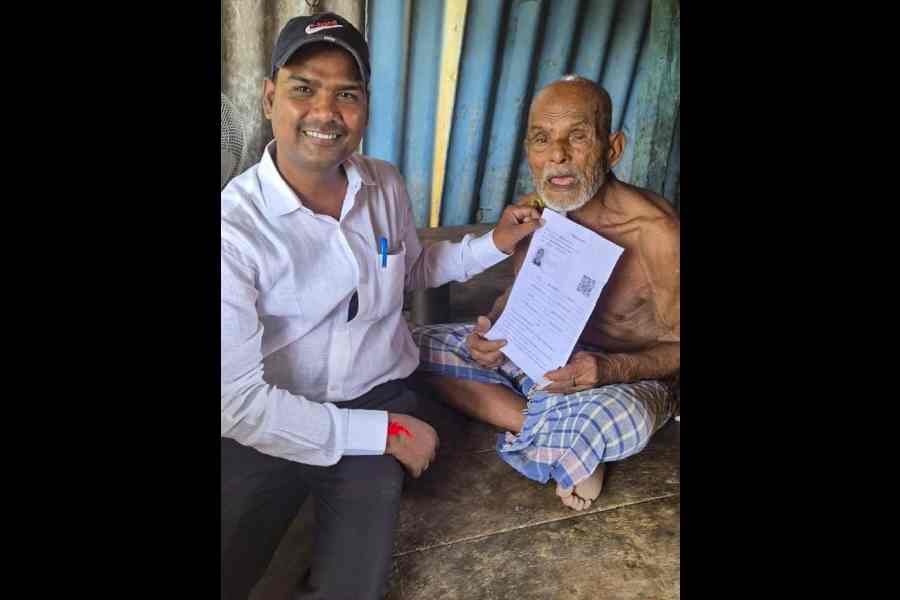 |
 |
| Scallops served over smoking juniper branches (above) is one of Nilsson’s classic dishes; Pix by Erik Olsson |
He’s a long-haired, bearded and blond Swede and he’s the new blue-eyed boy in the rarefied world of haute cuisine. Magnus Nilsson, the 29-year-old wunderkind presides over a tiny 12-seater restaurant called Fäviken Magasinet located in a sprawling estate in the wilds of Northwestern Sweden, about 650km from Stockholm. Getting to this part of Sweden, which is known as Jamtland (it borders Lapland) isn’t easy but Fäviken is jampacked every night and booked for the next 18 months.
Nilsson is the newest star to emerge in the Nordic food movement which has been making waves ever since Danish chef Rene Redzepi aced global polls three years in a row with Noma, his restaurant in Copenhagen. Redzepi has hailed Nilsson as his ‘successor’. But Nilsson does not offer gushy platitudes in return. He says: “Even though I’m an admirer of Redzepi, I’m not anyone’s successor nor am I a celebrity chef. I am just a product of my surroundings.”
In global gastronomy circles the word has gone out that ever since Ferran Adria’s El Bulli in Spain shut down, the race is to grab a table at Fäviken.
And now to cap it all, the young chef has turned author with his first book, Fäviken (published by Phaidon), named eponymously after the Swedish restaurant. Priced at a steep £ 35
(Rs 3,030), Fäviken is both a cookbook and a paean to the bounty of its wild surroundings.
Rifle through the pages of Fäviken and you get recipes that you and I couldn’t conjure up in our wildest dreams. There are extreme ingredients such as ‘a retired dairy cow, dry-aged for nine months’. If that seems a bit excessive, you might scout around for ‘one turnip that has been stored in the cellar with its little yellow leaves that have started sprouting’.
Nilsson’s is more of an austere — and crucially, local — style of cooking. Having grown up on his grandfather’s farm in nearby Östersund, he is no stranger to hunting. So, he forages on the 24,000 acre private hunting estate of Fäviken Magasinet, accompanied by his
 |
| Nilsson serves wild trout roe encased in warm crusts of dried pig blood as part of the 14-15-course meal at his restaurant |
English Setter Krut, for game meat like capercaillie, woodcock, baby moose and grouse. Poultry is bought from a farmer, Mr Duck and the rest of the meat is sourced from the neighbouring Norwegian region of Trøndelag. Vegetables are grown meanwhile in Fäviken’s greenhouse.
I have to admit I had pangs of disquiet about a Swedish breakfast hosted by the chef (after all, he is known for ageing meat for seven months and vegetables for eight months). The venue was a quirky new restaurant in London called The Tramshed which proudly displays an installation by Britain’s most famous artist Damien Hirst — a dead, stuffed Hereford cow and an equally dead cockerel preserved in formaldehyde in a steel and glass tank.
But coming from a chef who is known for his culinary creativity, the breakfast was a toned down affair with a cured salmon served with pickled seashore vegetables, a platter of wild woodland mushrooms followed by Mallard (wild duck) Scotch eggs along with a dip of rowan jelly. A shot glass filled with shrimp custard as a dip for deep-fried Cardigan Bay prawns came next. Dessert was elderberry and cobnut drop scones garnished with Westcombe ricotta and heather honey.
“I correspond with chefs of the country I am visiting, take a look at the local ingredients, the countryside and come up with my take on the cuisine of the region,” smiles Nilsson, after a session of intensive book-signing.
On his immediate agenda is an extensive book tour that will take in Australia, the United States, Korea and Toronto. The book is due to release in India in November so the chef is also contemplating a tour of the sub-continent. “While working in a restaurant in France, I was fascinated by stories of a fellow chef about his experience of cooking with an Indian chef,” says Nilsson.
Nilsson started out by studying at a local cooking school in Jamtland. That was followed by stints at two of the most famous Michelin-starred restaurants in Paris —L’Astrance and L’Arpège. And when he eventually took charge at Fäviken Magasinet in 2008, he became a veritable poster boy for Swedish rustic tradition.
 |
Throwing modern techniques of cooking out of the window, he has returned to traditional methods of drying, pickling, curing and smoking food. This approach together with a tendency to cook only seasonally available local produce — lichen, cloudberries, lingonberries, black grouse — is what brings Fäviken Magasinet its fame.
“I cook rektun mat or real food, the food I grew up eating at my grandparents’ home. Except for the fact that even though Swedish food is high on spices, I do not use any. My food is about the produce, not the seasoning,” says Nilsson.
A typical evening at the restaurant starts at sharp 7pm and you may not be fed if you are late. The doors are shut at 7.05pm. As Nilsson says: “If you haven’t planned well enough to be on time and haven’t had the decency to call and tell us, you can dine elsewhere.”
A 14-15 course meal includes dishes such as smoked trout roe encased in dried pig’s blood, cured goose slices and scallops served up on burning juniper branches. But the evening’s real food theatre takes places when in the middle of the dining room, Nilsson saws through the giant femur of a cow and extracts the marrow to go with a dish that calls for dices of a ‘very fresh cow’s heart’, turnip leaves and lovage salt. “It is the dish that people most remember and love,” he says.
Dinner costs 1,250 SEK (Rs 10,275) and a selection of wine comes for an extra 1,250 SEK. Keeping in mind its remoteness, the old hunting lodge of Fäviken also doubles up as a B&B.
But, remember, patrons get a choice of what they eat. As Nilsson points out: “If you come back to us, it means you appreciate Fäviken. So, you have more influence over your evening.”










